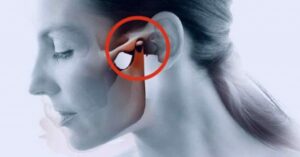Temporomandibular Disorder (TMD) | Clínica Dental Anita Ankova
Treatments for Temporomandibular Joint Dysfunction (TMJ)

The temporomandibular joint (TMJ) is the only movable joint in the head, and although it is relatively unknown, it plays a crucial role in functions as important as chewing, opening and closing the mouth, speaking, and gesturing, among others.
The temporomandibular joint (TMJ) can experience dysfunction or pathologies due to its anatomy or how it relates to mandibular movements.
Incorrectly positioned teeth, clenching, or bruxism, as well as traumas, can be the origins of such pathologies.
Bruxism can occur during the day or at night, and the treatment approach differs. During periods of stress and tension, we tend to clench our teeth more, causing discomfort, pain, and dental hypersensitivity. In such situations, medication such as painkillers, anti-inflammatories, and muscle relaxants is often used.
Patients with diurnal or nocturnal bruxism may experience oral issues such as dental fractures, fissures, dental wear, headaches, cervical pain, and ear-related pains.
At Anita Ankova Clinic in El Pinar de Navalcarnero, we specialize in temporomandibular dysfunction and pathologies. We treat symptoms and focus on prevention to avoid future problems.
Milder pathologies can be treated in the office with treatments such as nocturnal bite guards, occlusion adjustments, or orthodontic treatments.
For moderate/severe pathologies, we may require the collaboration of maxillofacial colleagues and physiotherapists.
If you experience any of the mentioned symptoms, you should consult and seek treatment as soon as possible. Prevention is always better than cure!
Bruxism Treatments:
Bite Guard
The dental bite guard is an orthopedic device made of resin, customized to fit between the upper and/or lower teeth to cushion the bite. Its purpose is to protect the TMJ from conscious or unconscious pathological movements.
This device acts on the TMJ, muscles, and teeth. It prevents dental wear or fractures, headaches, cervical pain, and protects our temporomandibular joint by positioning the bite in the most appropriate and harmonious way with the muscles. It is custom-made based on measurements and the patient’s movement study during opening, closing, and lateral movements.
When should you use it?
-
- For cases of:
- Jaw pain, whether upon waking up, while chewing, or when yawning.
- Difficulty in opening the mouth normally (Trismus).
- Clicking or popping sounds when opening and closing the mouth.
- Locking or dislocation of the jaw.
- Headaches, earaches, neck pain, migraines, muscle contractures in the facial and neck areas.
Selective Grinding or Occlusal Adjustment
Selective grinding is a procedure in which slight wear is applied to specific areas of the teeth to balance the occlusion and eliminate potential interferences between teeth that block free mandibular movement. It is performed in cases of mild malocclusions that do not involve significant tooth displacements.
Orthodontics
Incorrect bite alignment can lead to temporomandibular joint (TMJ) pathologies. Each tooth has a specific function, and the correct position allows it to fulfill that function. One of the dental malocclusions that most favor the development of temporomandibular joint (TMJ) pathologies is increased overbite (when the upper teeth cover more than one-third of the lower teeth). If the overbite reaches the size of a complete crown, the risk of dysfunction increases.

